#Honda NSX V6
Explore tagged Tumblr posts
Text
Honda NSX-R GT: O Supercarro Japonês Exclusivo que Fez História
O Honda NSX-R GT é um dos supercarros mais emblemáticos da história automotiva japonesa. Este modelo, uma evolução do famoso NSX, foi desenvolvido para atender às exigências das competições e para demonstrar o melhor da engenharia da Honda. Com produção limitada e um desempenho incomparável, o Honda NSX-R GT se tornou um ícone para entusiastas de carros e colecionadores em todo o mundo. A…
#Honda NSX Iconic#Honda NSX Lightweight#Honda NSX Performance#Honda NSX Track Car#Honda NSX Tuning#Honda NSX V6#Honda NSX-R GT#Honda NSX-R Race#Honda NSX-R Top Speed#NSX-R GT#NSX-R GT Acceleration#NSX-R GT Aerodynamics#NSX-R GT Collector&039;s Car#NSX-R GT Comparison#NSX-R GT Engine#NSX-R GT Exhaust#NSX-R GT Exterior#NSX-R GT Features#NSX-R GT History#NSX-R GT Interior#NSX-R GT Launch#NSX-R GT Overview#NSX-R GT Price#NSX-R GT Production#NSX-R GT Review#NSX-R GT Sound#NSX-R GT Specs#NSX-R GT Supercar#NSX-R GT vs Competitors#NSX-R Limited Edition
0 notes
Text






Honda NSX-R Prototype, 2002. The NA2 series NSX-R used weight reduction to improve performance with Carbon Fibre bodywork, deletion of the audio system, power steering and air-con. Additionally Recaro carbon-kevlar racing seats and larger/lighter alloy wheels were fitted making a total 100kg weight loss. The 3.2 litre V6 was hand-built and although Honda claimed it was no more more powerful that a standard NSX with 290hp there was speculation that the true output of the engine was higher.
387 notes
·
View notes
Text
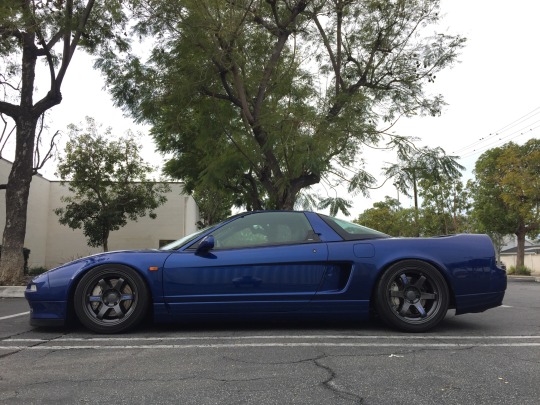
123 notes
·
View notes
Text
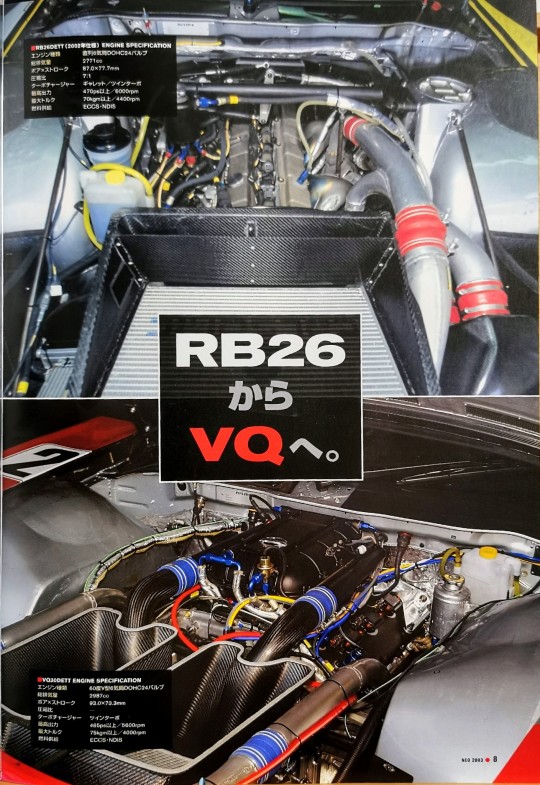
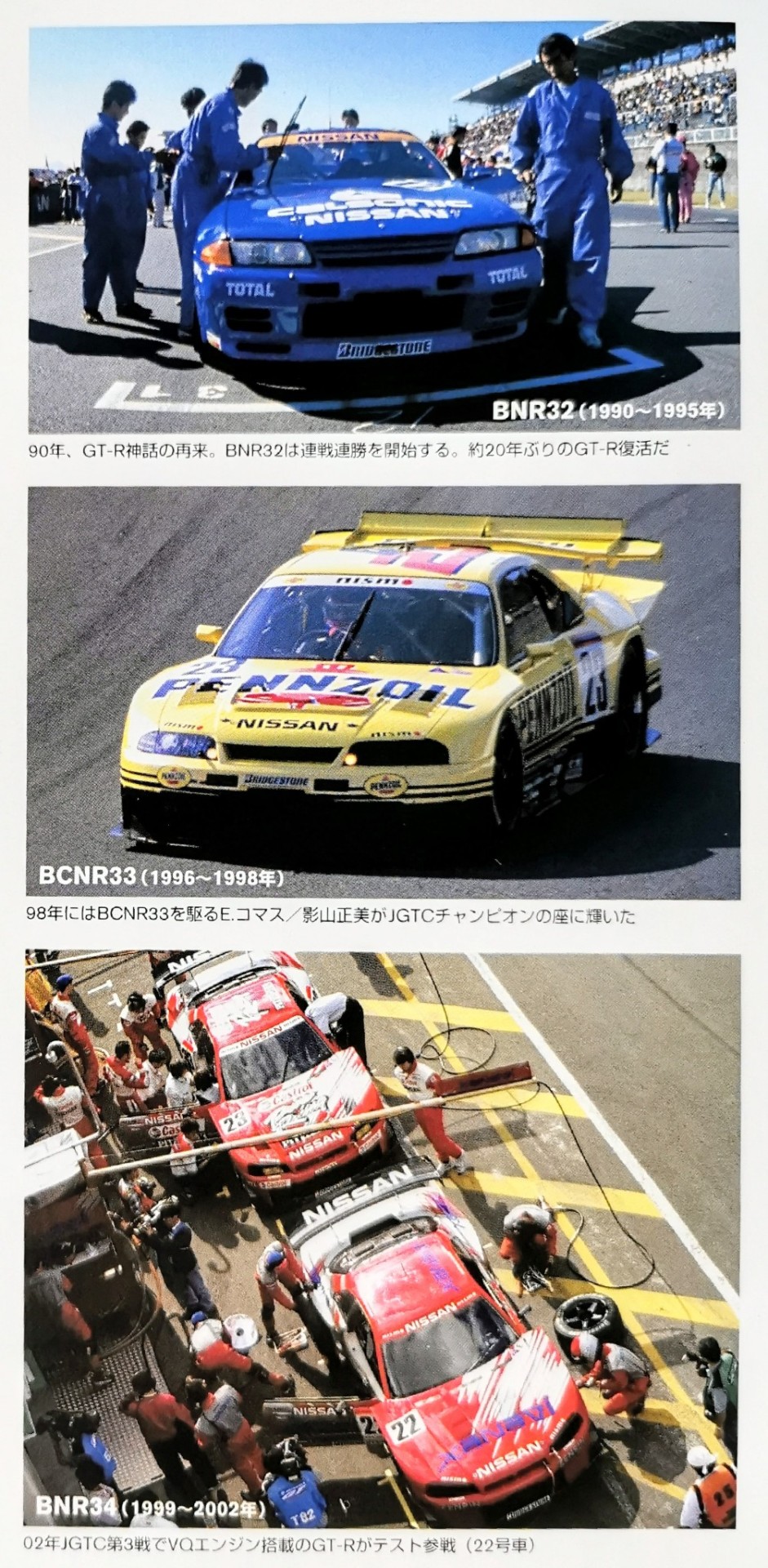
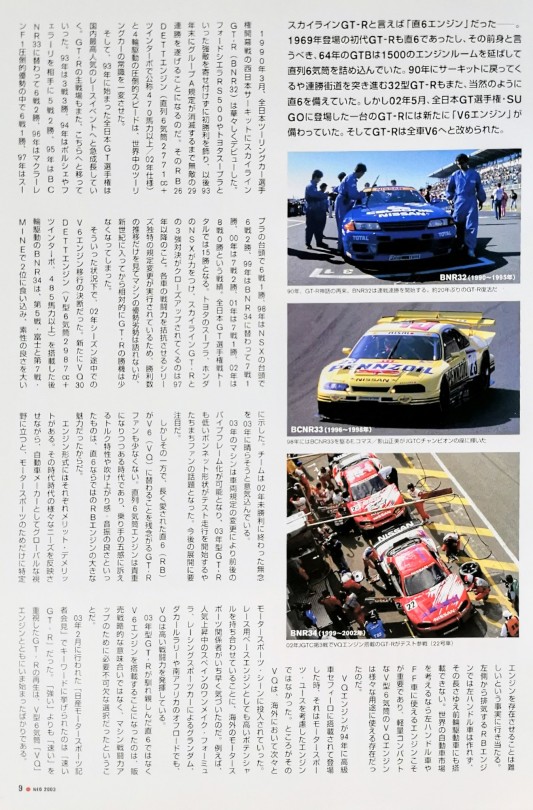
Speaking of the Skyline GT-R, it was a straight 6 engine. The first-generation GT-R, which debuted in 1969, was also a straight-six engine, and its predecessor, the 1964 GTB, had a 1500 with an extended engine room and a straight-six engine. The R32 GT-R, which returned to the circuit in 1990 and went on a winning streak, was naturally equipped with a straight-six engine. However, in May 2002, a GT-R that appeared in the All Japan GT Championship SUGO was equipped with a new "V6 engine." All GT-R models were changed to V6.
In March 1990, the Skyline GT-R (BNR32) made its spectacular debut at the West Japan Circuit at the opening round of the All Japan Touring Car Championship. He achieved his first victory by holding off strong opponents such as the Ford Sierra RS500 and Toyota Supra, and since then has won 30 races.
They would be on an unbeatable 20 race winning streak until the Group A regulations expire at the end of the year. The overwhelming speed of its RB26DETT engine (inline 6-cylinder 2771cc+ twin turbo with nominally over 470 horsepower/02 specification) and four-wheel drive completely changed the conventional wisdom of touring cars around the world.
The All Japan GT Championship, which started in 1993, rapidly grew to become the most popular racing event in Japan. The main battlefield for the GT-R has also shifted here. In 1993, it won 3 out of 3 races, in 1994 it won 2 out of 5 races against Porsche and Ferrari, in 1995 it was replaced with the BCNR33 and won 2 out of 6 races, and in 1996 it won 1 out of 6 races during the overwhelming dominance of McLaren F1. In 1997 1 win in 6 races with the rise of Supra, 2 wins in 7 races in 1998 with the rise of NSX, 1 win in 7 races in 1999 after replacing with BNR34. 2 wins in 7 races in 2000, 1 win in 7 races in 2001, and 0 wins in 8 races in 2002. This is a total of 15 wins in the All Japan GT Championship. It wasn't until 1999 that Toyota's Supra and Honda's NSX gained strength, and a close-up competition between them and the Skyline GT/R began. Due to changes in the regulations unique to the series that equalize the combat power of each car, it is impossible to say whether the machines are superior or inferior just by looking at the trends in the number of wins, but since the beginning of the new century, the GT-R has been relatively competitive. The chances of winning have diminished.
Under these circumstances, the decision was made to switch to a V6 engine midway through the 2002 season. The rear-wheel drive BNR34, equipped with the new VQ30DETT engine (V6 cylinder 2987cc+ twin turbo, over 485 horsepower), showed off its good origins by finishing in 2nd place at the 5th race at Fuji and at the 7th race at MINE. The team is disappointed that it ended 2002 without a win.
The team is determined to make amends for the lack of a win in 2002 in 2003.
The 2003 machine has changed before and after due to changes in vehicle regulations.
It became possible to use a vibrator frame, and the low hood shape of the 2003 GT-R became a hot topic among fans as soon as test runs began. We need to pay attention to future developments.
However, on the other hand, there are many GT-R fans who are disappointed that the long-loved straight-six (RB) will be replaced by the V6 (VQ). This was an era when in-line six-cylinder engines were becoming more valuable, and the RB engine's great appeal was its torque characteristics that appealed to the rider's five senses, as well as its good engine speed and vibration.
Each engine type has advantages and disadvantages. While reflecting the various needs of each era, from a global perspective as an automobile manufacturer, we created products specifically designed for motorsports.
We come to the fact that it is difficult to make an engine exhaust. An RB engine that exhausts from the left side cannot be used in left-hand drive cars, and because of its length, it cannot be installed in front-wheel drive cars either. When considering the global automobile market, it is important to have an engine that can be used in left-hand drive and front-wheel drive cars, and the lightweight and compact V-type 6-cylinder VQ engine can be used for a variety of purposes.
It was.
VQ engine became a luxury in 1999
When it was first introduced in the Cefiro car, it was not an engine designed for motorsports use. However, the VQ was introduced into the motorsports scene one after another overseas. Overseas motorsports officials were quick to realize that it had high potential as a base engine for racing. For example, Spain's one-make formula, which is becoming increasingly popular, Grand Am racing sports cars, the Dakar Rally, and off-road racing in South Africa.
VQ is demonstrating high combat power.
The decision to equip the 2003 model GT-R with a V6 engine instead of the familiar straight-six was not a sales strategy, but an essential choice to improve the machine's competitiveness. I'm saying that.
At the ``Nissan Motorsports Press Conference'' held in February 2003 the keyword mentioned was ``fast GT-R.'' The revitalization of the GT-R, which emphasizes ``fast'' rather than ``strong,'' has just begun with the V-6 VQ engine.
PIC CAPTIONS
BNR32 (1990~1995)
In 1990, the GT-R myth returns. BNR32 begins a winning streak. The GT-R is back for the first time in about 20 years.
BCNR33 (1996~1998)
In 1998, E. Comas/Masami Kageyama, riding BCNR33, won the JGTC championship.
BNR34(1999~2002)
GT-R equipped with VQ engine participates in test race at JGTC Round 3 in 2002 (car No. 22)
11 notes
·
View notes
Text
Alternative universe where in 1990 lemans introduced a hot hatch class:
Honda enters their new CRX featuring the C30A V6 engine from an NSX.
VW enters a mk2 Golf GTI featuring a tuned 12 valve 2.8L VR6 engine from the Passat.
Suzuki enters their mk2 Swift GTi with a 1.6L G16B turbo charged engine
Toyota enters their EP80 starlet GT-turbo with an upgraded 1.5L 4E-FTE engine
Renault enters their brand new Clio with a 2.8L V6 from the Renault 25.
In the end Honda wins by a huge margin citing both aerodynamic efficiency and brutal grip. VW retires after 14 hours due to an overheating issue. Toyota don’t quite have the pace to keep up with the larger capacity V6 cars but the Suzuki punches way above its weight coming in second.
3 notes
·
View notes
Text





Welbernewsnoticias História de NSX Honda supercarro criado Japão nos anos 80, e foi proibido mundial sistema de faróis retráteis que se escondem em capô, a proibição criou uma votação de novo NSX Honda legalizado seriam eu Welberfotos vencedor de designer e desde 2015 o supercarro tem aparecia de nave futurista e fucinho de frente o capô de porta malas original. Os faróis grandes esparramados e muito bacana obra, o motor explicito com vidro de transparente blindados de motor tradicional de Honda supercarros. V6 tradicional de Honda supercarros, interno com bastante plásticos e borrachas e bancos gigantes. Esportivos de prêmios mundiais.
Eu ganhei com progeto Welberfotos designers supercarro o NSX Honda.
desde 2015 NSX Honda supercarro criado por Welberfotos vencedor de designer prêmios de belezas de supercarro.
#honda
#fotos#tumblr#welberfotos#postar#photos#welberdesignershop#photo#foto#cars#carros#Honda#Nsxhonda#Welberfotos#Designer#Cars#Autos#Supercar#Supercarros#Supercarro
6 notes
·
View notes
Photo

La Honda NSX , la voiture qui a changé la donne. Lancée en 1990, la NSX a redéfini les normes des supercars en offrant un design élégant et épuré, une technologie de pointe et une expérience de conduite incroyable. Le moteur V6 de 3,0 litres à aspiration naturelle développait 270 chevaux, permettant à la NSX de passer de 0 à 100 km/h en moins de six secondes. La NSX Phase 1 a posé les bases de la supercar moderne et reste une voiture culte pour les passionnés d'automobiles. Crédit Photo : @supercarphotographe974 @vincent_clain_photographe #HondaNSX, #NSX1990 , #supercar, #carsofinstagram, #carporn, #Japaneseengineering https://www.instagram.com/p/Cpfkm99Oq-X/?igshid=NGJjMDIxMWI=
5 notes
·
View notes
Text
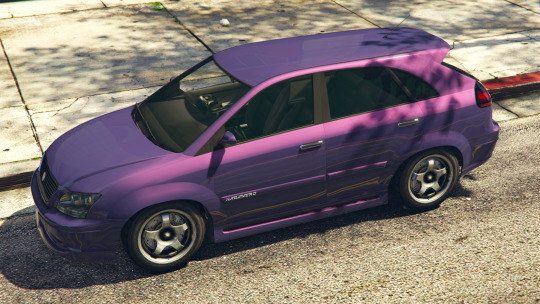
Bless the Habanero, it tried so hard. This little Lexus RX knockoff loved to throw its rear end out and had a high-strung engine note that reminded me of a small displacement V6. It made it feel like it really, really wanted to be a tuner. If it had a little more mod potential or speed it would have been one of my favorite cars.

Also on the Lexus train, the game had a Lexus GS in the form of the Intruder. Naturally, I had to BIPPU it with an obnoxious wrap and oversized wheels. In spite of that, it was still a comfy car to drive. I think I'm just a sucker for full-width taillights.

The Weevil Custom was another really cool car released very late in the game's life that just wasn't enough to keep me coming back to it. It was fast, fun, cool looking, and mean, but when the cards were down it was just another car. At least it gave me some pleasure to take English Dave's prized car to the chop shop. Enjoy that panther cage, jerk.
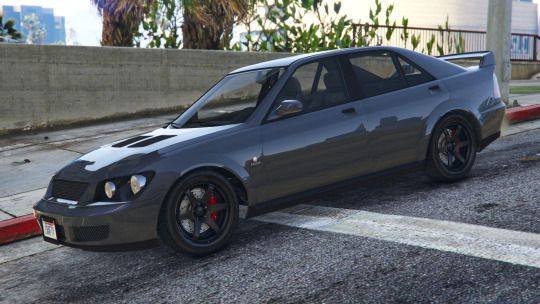
There was a time when a Sultan was in every player's garage. As a fast four-door with good handling that could go off-road and be found on the streets, it was popular among brand new players who needed a reliable vehicle for heists and missions. Other cars eventually outclassed it and left it to be just another street car, but its day in the sun was bright indeed.
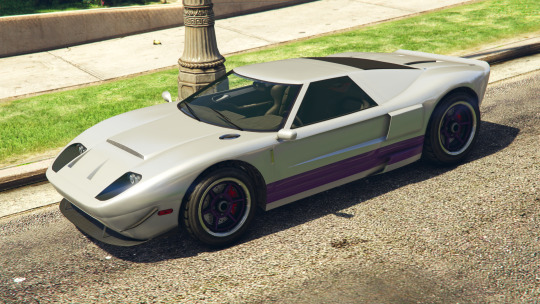
The poor, poor Bullet. Such a nice car doomed to a lifetime of heckling for being misclassified as a Super and landing squarely at the bottom of the rankings, when it would have fared much better in Sports. If you disregard the race tiers and judge it purely on its own merits, you'll find a fun little Ford clone that's great for cruising.

The Surge was a car that was easy to pick out in traffic due to its neat illuminated grille. It was ahead of its time, in my opinion, considering it was from 2013 and light-up badges and grilles didn't start catching on until years later. Performance was subpar, but it was at least small enough to fit between the bunker bollards and go roll around the weapons factory facilities.

My first GTA winter was spent in the company of a Radius. It even had steelies on so the nicer wheels wouldn't get damaged in the snow. This lovechild of a Dodge Caliber and a Ford Edge won my heart with above-average speed for an SUV and a comically aggressive exhaust note that you'd never expect from such a round little creature.

Honda's modern automotive offerings rarely caught my eye, but it was nice to see an interpretation of their new NSX in the form of the Jester. I remember it having quite a throaty sound to it that made it enjoyable to drive in spite of being an otherwise average sports car.
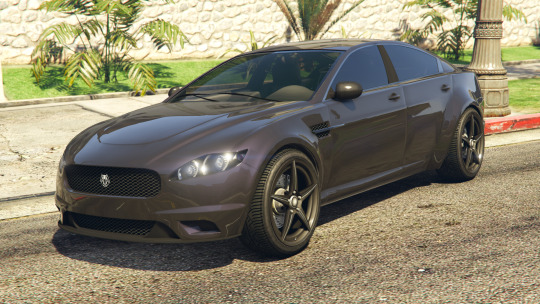
Sometimes I found it hard to believe that the Jackal was a car that could be insured directly off of the streets. It was a fast little thing and I remember being taken aback at how much torque it had in higher gears, where similar cars would have run out of breath. If I had to start all over and pick a four-door fresh out of the gate, I would probably pick a Jackal.
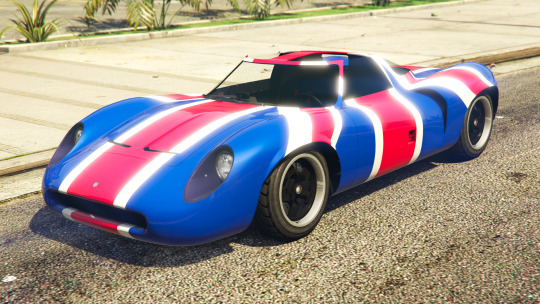
Truthfully, I was never much of a fan of the Swinger, but it showed up for free on the podium once and I couldn't help snagging one just to show off the needlessly obscure and nigh-unobtainable livery that was only available to people who played during one specific week many years ago.
5 notes
·
View notes
Text
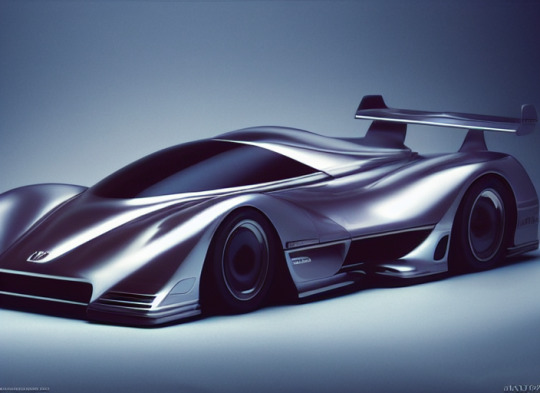
With the Honda/Acura NSX beginning to show its age by the early 2000's, Honda decided to start working on a second generation model, with a desire to participate in the Le Mans Prototype 1 race to demonstrate their engineering prowess. The Honda RSX GT1 was shown at the Tokyo Motor Show in August of 2004, with nearly no resemblance to the planned 2006 RSX, other than what was underneath. With a 4.4L V8, a modification of the 3.2L C32B V6 engine (with an added row for extra power), and a new AWD system, it would prove to dominate in LMP1, with the type being used until the 2008 year. 2008 brought the introduction of the RSX GT1 Limited Edition, a modified RSX with new carbon fiber body panels, and a more powerful 4.7L V8. While not eligible for LMP1, it was sold as a road-going warrior, on par with Ferraris at the time, for a little over $150k. 500 units sold out immediately after the announcement at the Tokyo Auto Show, and are all desirable collectors items, with even a driven car with 45k miles demanding nearly a million at the auction block in 2022.
5 notes
·
View notes
Text
Honda Resmikan American Honda Motor Collection Hall di California

BALIPORTALNEWS.COM, CALIFORNIA – Honda resmikan American Honda Collection Hall di Torrance, California, Amerika Serikat yang menampilkan berbagai ragam koleksi kendaraan roda empat, roda dua, power products, mobil dan mesin balap, hingga informasi, foto dan video grafis mengenai Honda serta Acura di Amerika Utara dalam kurun waktu 60 tahun belakangan ini. American Honda Collection Hall dapat diakses oleh publik secara bebas (tanpa dipungut biaya) untuk menyaksikan ragam koleksi kendaraan dan juga berbagai informasi mengenai sejarah Honda di Amerika Serikat. American Honda Collection Hall berdiri di atas lahan sebesar 20.000 meter persegi yang terhubung dengan kantor pusat dari American Honda Motor yang merupakan perusahaan Honda pertama yang berdiri di luar Jepang sejak tahun 1959 atau sudah lebih dari enam dekade. Noriya Kaihara selaku President & CEO American Honda Motor Co. and Director of North American Regional Operations mengatakan, Collection Hall merefleksikan mimpi serta ambisi dari Honda dan juga ekspresi kegembiraan dari konsumen yang mencintai produk Honda dan juga para pecinta balap yang mendukung kesuksesan Honda. “Kami juga merasa sangat bangga menampilkan sejarah panjang kami di Amerika yang dapat dilihat dari beragam display produk serta teknologi yang turut membantu serta mendukung berbagai aktivitas publik,” jelas Noriya. Display Produk Kendaraan Roda Empat di American Honda Collection Hall, sebagai berikut : - 1970 Honda N600 Coupe – mobil Honda pertama yang dijual di Amerika Serikat. Menggunakan teknologi mesin 600cc air-cooled two-cylinder engine - 1975 Honda Civic CVCC Hatchback – mobil Honda pertama yang memenuhi U.S. Clean Air Act emissions standards,. - 1979 Honda Accord CVCC Hatchback : Honda Accord Hatchback yang menggunakan mesin CVCC 4 silinder. - 1985 Honda CRX Si : model Honda berperforma tinggi (Si) pertama yang dijual di Amerika Serikat, dilengkapi dengan teknologi Honda's advanced PGM-FI fuel injection. - 1986 Acura Legend: model Acura pertama di Amerika Serikat dengan performa tinggi serta tampilan mewah - 1991 Acura NSX: model eksotik sports car pertama Honda yang dikembangkan dari mobil balap F1. - 1997 Honda CR-V: model Compact SUV pertama Honda yang diperuntukkan untuk mendukung kegiatan sehari-hari yang aktif. - 2006 Honda Insight: mobil produksi massal pertama yang dijual serta diproduksi di Amerika Serikat. - Display Mobil Balap Honda; - 1992 Acura Spice GTP-Lights yang dimodifikasi menggunakan mesin V6 milik Acura NSX di ajang balap IMSA Camel GT Lights series; - Reynard 961-031 Indy Car 1996: mobil balap IndyCar Honda; dan - Acura Integra Realtime 1997: dikembangkan dari mobil Acura Integra Type R. Untuk informasi lebih lanjut mengenai American Honda Collection Hall dapat dilihat di halaman website di www.hondacollectionhall.com.(bpn) Read the full article
0 notes
Text
Motor Honda NSX: A Revolução dos Esportivos de Alta Performance
O Motor Honda NSX é um marco na história automotiva, combinando engenharia de ponta, desempenho e inovação tecnológica. Este motor foi projetado para equipar um dos carros mais icônicos já criados pela Honda, o NSX, que redefiniu os padrões dos esportivos quando foi lançado. Neste artigo, exploraremos a evolução, a tecnologia, e as contribuições deste motor para o mercado automotivo. A História…
#Honda NSX#Honda NSX 2024#Honda NSX aceleração#Honda NSX análise#Honda NSX interior#Honda NSX motor#Honda NSX turbo#Motor esportivo Honda#motor Honda esportivo#Motor Honda NSX#motor NSX#motor NSX V6#NSX comparação#NSX consumo#NSX design#NSX especificações#NSX ficha técnica#NSX híbrido#NSX história#NSX inovação#NSX manutenção#NSX performance#NSX potência#NSX potência máxima#NSX preço#NSX revisão#NSX som do motor#NSX tecnologia#NSX teste de estrada.#NSX velocidade
0 notes
Text
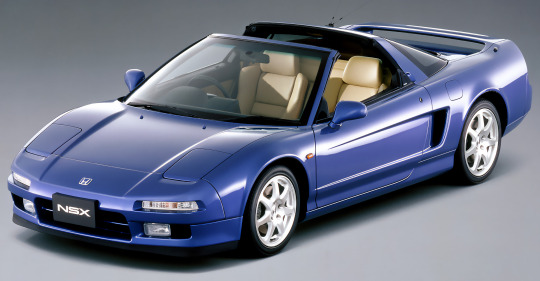
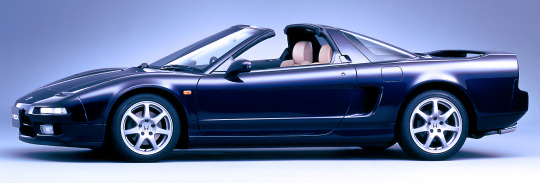

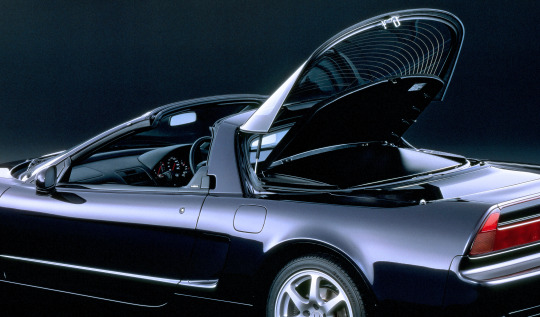

Honda NSX-T, 1995. The targa roof version of the first generation NSX arrived in 1995. The car's all-aluminium semi-monocoque architecture required substantial re-engineering to create the targa version. The roof stowed neatly above the engine by lifting the rear window
#Honda#Honda NSX#Honda NSX-T#1995#targa roof#mid-engine#V6#1990s#open roof#first generation#supercar
290 notes
·
View notes
Text

1980s: The Acura brand
Following a decade of research, Honda opened 60 new dealerships in North America by 1986, to support its Acura automobile division. Acura was the first Japanese luxury brand to be introduced, and its initial offering consisted of two models: the executive class Legend, a V6-powered sedan, and the compact class Integra, available as a five-door and three-door hatchback. The Legend was the result of Project XX, a joint venture Honda entered into with the Austin Rover Group of Great Britain and was mechanically related to the Rover 800 series, and the Integra was an improvement of the Honda Quint hatchback.
The success of these models, particularly the Legend, led to competing Japanese luxury brand ventures (Toyota's Lexus that began development in 1983 as the F1 project, and Nissan's Infiniti who began development in 1985 by revising their Japan-only flagship Nissan President; in the late 1990s Mazda planned but never launched its own Amati luxury division). The goal of the Legend was to compete with rivals Toyota Crown and the Nissan Cedric and Gloria, but due to its 1986 introduction worldwide, Toyota, Nissan and other companies like Lincoln took notice of the markets reaction to the Legend and later the Vigor and offered vehicles that addressed the executive size car. Toyota introduced the Lexus ES, Nissan introduced the Infiniti J30 and Lincoln utilized the Taurus platform and named their new sedan the Continental.
In 1987, Acura's first full year of sales, they sold 109,000 cars with the flagship Legend sedan accounting for 55,000 sales and the rest were of the smaller Integra. By 1990, Acura was selling 138,000 vehicles, including 54,000 Legends, compared to Mercedes-Benz's 78,000 cars and 64000 for BMW and Lexus.
1990s: NSX, updates
In 1991, five years after the debut of the Legend and Integra, Acura introduced the NSX, a midship V6 powered, rear-wheel-drive sports car. The NSX, an acronym for "New Sports eXperimental", was billed as the first Japanese car capable of competing with Ferrari and Porsche. This vehicle served as a "image car" for the Acura brand, heralding the introduction of Honda's VTEC technology. The NSX was the world's first all-aluminum production car, and was also marketed and viewed by some as the "Everyday Supercar" thanks in part to its ease of use, quality and reliability, traits that were unheard of in the supercar segment at the time. With the release of the NSX, Acura introduced the "A-badge", a stylized pair of calipers - a tool used for exacting measurements to imply that Acura vehicles are built to precise and demanding standards.
Despite a strong start in market acceptance for the Acura brand, sales suffered in the mid-to-late 1990s. Some critics attributed this decline in part to less inspiring designs, which were re-branded Japanese-spec Hondas, such as the Acura Vigor in 1992, a response to the Lexus ES and Infiniti J30. Additionally, during this time Acura switched to an alphanumeric nomenclature formula, dropping the Legend, Vigor and Integra titles, following the lead of the NSX sportscar. The 1996 3.5 RL, which replaced the popular Legend, and the Vigor became the 2.5 TL and 3.2 TL, and was regarded by many as the epitome of this problem, namely because the alphanumeric designations were more anonymous than the former Legend, Vigor and Integra titles, which had grown into their own cult followings. Also, the RL's 210 horsepower (160 kW) V6 (later increased to 225 hp), together with a high price and styling that cautiously copied the larger rear wheel drive and V-8 powered Lexus LS 400, did little against BMW, Audi, Lexus, and other competitors.
During this time, the NSX also lost sales as Acura made few changes from its original 1989 trim. A year later, the Integra sedan was withdrawn from the Canadian market, replaced by the market-exclusive Acura 1.6EL, a rebadged Honda Civic. The Integra sedan continued to be sold in the United States until 2001 (in name only, the model it was replaced with, the RSX, was simply a rebadged left-hand-drive version of the JDM DC5 Honda Integra). The Acura 3.2 TL.
Despite these letdowns, Acura gained prominence in the 1990s with a young group of customers: "tuner" enthusiasts. Parent company Honda's reputation with this demographic as a maker of "easy-to-tune" and "rev-happy" engines rubbed off onto Acura, and the Integra became a popular tuner car.
2000-2003: TL, RSX, MDX
Beginning around the year 2000, Acura experienced a rebirth which was catalyzed by the introduction of several redesigned models. The first of these models was the 1999 Acura 3.2 TL, an upscale sedan competing with the likes of the Lexus ES, Infiniti I30, and BMW 3-series. Critics suggested that although 3.2 TL did not outdo its competition in any one area of luxury cars, it offered a well-rounded blend of sportiness and luxury. These characteristics, combined with the TL's competitive price, proved very popular with consumers. Subsequent Acura models have followed a similar philosophy of offering lots of standard equipment and very few options.
Another refreshed Acura introduced in the early 2000s was the MDX, a popular three-row crossover SUV based on the Honda Odyssey minivan. The MDX replaced the slow-selling SLX, which was little more than a rebadged Isuzu Trooper. The MDX was a car-like crossover SUV with limited off-road capability that catered to the demands of the luxury SUV market. It was given top honors by Car and Driver in its first comparison test against seven other SUVs. Other cars in Acura's line-up during this time included the 3.2 TL, 3.2 CL, RSX (formerly the Integra hatchback), and the NSX. By the late 2000s, Acura had dropped the inclusion of engine displacement numbers in its vehicle designations, retaining a simpler, two- or three-letter designation instead (e.g. 3.5 RL became RL). The 2000s have been plagued by transmission and other problems.
In 2001, a new coupe, badged as the RSX was introduced to the Acura line up. It was a replacement for the outgoing Integra. The RSX is a rebadged Honda Integra (DC5) from the Japanese market. As a result, the RSX is technically a new generation of the outgoing Integra. Much like the Integra, the RSX was a hit in the tuner market. However, at the end of 2006, the RSX was taken out of the Acura line up, subsequently in the Japanese market as well. It is not known why the RSX did not continue to be sold as the Integra in Japan, however, the reason that Acura gave for the cancellation of the RSX is that Acura wishes to move up in the luxury brand, thus cannot sell a car that is mostly driven by teenagers.
2004-2006: RL, TSX, RDX
A new TL debuted for the 2004 model year, featuring sharp, Italianate styling and a 270 hp (200 kW) V6 measured by the then-current SAE standards. The new TL increased sales dramatically to 70,943 American units in 2005, trumping competitors such as the C-Class, G35, CTS, ES 300, and A4.
Also around the same time the Acura TSX was introduced as a cheaper alternative to the BMW 3-Series. It was essentially a re-badged European and Japanese-market Honda Accord loaded with features. This model became the only 4-cylinder sedan in Acura's line-up.
In 2005, a new RL was introduced with a 300 hp (220 kW) V6, improved styling, and Super Handling All-Wheel Drive (SH-AWD), a system capable of sending almost all of the RL's power to just one wheel in a turn. The second-generation RL appeared on Car and Driver's Ten Best list for 2005, and also garnered an CNET.com "Editor's Choice" Award for Top Tech Car. While critically acclaimed, sales have not met expectations, as the price of the RL is perceived to be out of its bracket. As the new RL offered more features and performance than the base version of its luxury competition's (i.e., the base six-cylinder. BMW 5 Series), Honda Japan suggested that it could charge more, though Honda Canada disagreed. The RL's initial MRSP was $69,500 CAD, more than the six-cylinder BMW 525i and close to that of the V8-powered BMW 545i. At the RL's price point, most consumers expected a V8, furthermore they did not perceive Acura as being on par with its German rivals and expected more value from the Japanese marque. The damage from Honda Japan's alleged hubris was done, even though Honda Canada has since reduced the RL's price.
Acura's new models—particularly the TL and TSX—were well received by the motoring press and became Acura's top selling vehicles. The TSX was on Car and Driver's Ten Best list from 2004–2006.
In 2006 Acura introduced a small SUV which was based on its own unqiue unibody chassis called the RDX with models becoming available to U.S. consumers in August 2006. It is powered by a turbocharged 240-hp 4-cylinder engine and, like the RL, uses Acura's SH-AWD system. The model is available in two versions: Premium (the standard offering), and Technology Package (an upgraded offering with a GPS navigation system). A completely redesigned MDX became available in the fall of 2006 with a 300 hp (220 kW) V6 engine and Super Handling All-Wheel Drive.
0 notes
Text
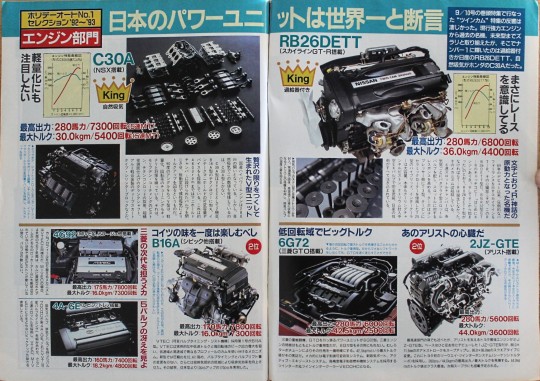


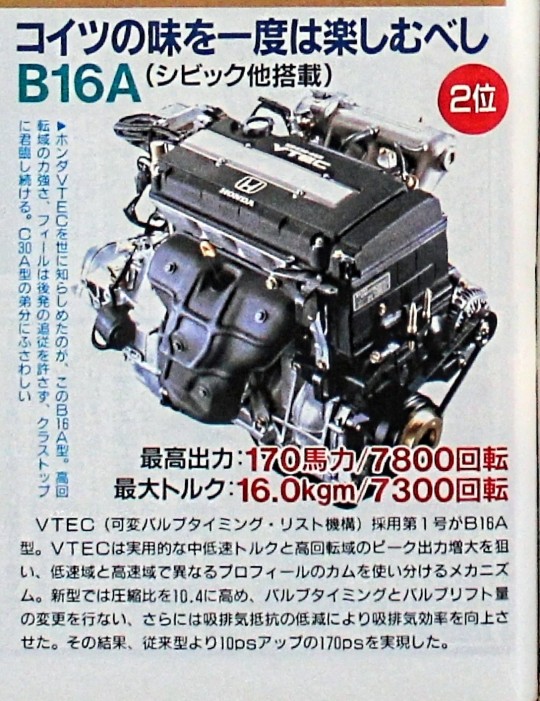
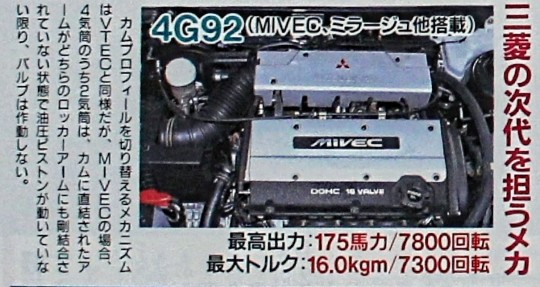
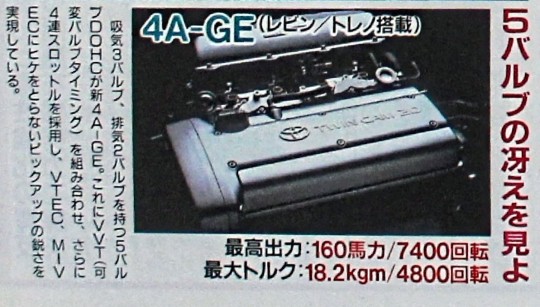
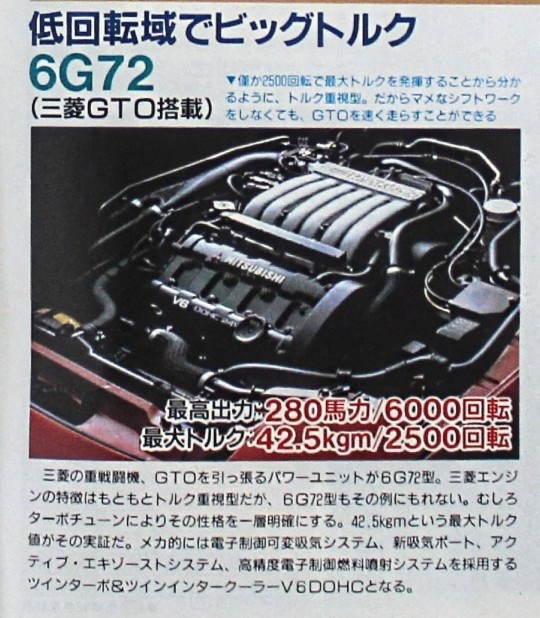
Article from a 1993 Holiday Auto magazine on what they thoughtvwere the best JDM engines from the previous 12 months.
TRANSLATION
Holiday Auto No.1 Selection '92~'93
engine department
Japanese power unit is the best in the world
The reaction to the “Twin Cam” feature in the opening feature of the 9/10 issue was tremendous. We have a wide range of products from current powerful engines to past famous machines and future models, but the one with a supercharger won the number one spot.
Boosted No 1 Nissan's RB26DETT,
Natural intake was Honda's C30A.
RB26DETT (equipped with Skyline GT-R)
King with supercharger
I'm really conscious of the race
Literally the famous machine that became the driving force behind the "R" myth.
Since its debut in 1988, the Skyline GT-R has shown overwhelming performance. The heart of this is the RB26DETT model. As the slogan of the BNR32 GT-R says, “In the beginning, the engine was there. The mechanics are transcendent."
The 6-throttle chamber has a butterfly type throttle valve for each cylinder to enhance throttle response. The turbo is a hybrid of the T3 type on the compressor side and the T25 type that uses a ceramic rotor on the turbine side. The intercooler has a large capacity. The main body is also fully armed with a cooling channel piston and an EX valve during sodium filling. All of Nissan's technology has been incorporated.
▲Metal sodium is added to the stem of the exhaust valve, enclosed. Solid at room temperature and liquefied at high temperature
Suppresses the temperature rise of the exhaust valve by using the properties of sodium
_______________________________________________
C30A
(Equipped with NSX)
King of naturally aspirated
I also want to focus on weight reduction
A V-shaped unit created with the ultimate in luxury
The domestic high-power engine has become a 280ps battle. However, the C30A is the only naturally aspirated engine that achieves this figure.
The C30A is the second VTEC engine. In addition to the technology of the B16A type, it also adopts a variable capacity device for the intake manifold. This is to close the valve provided in the manifold chamber up to about 4800 rpm, and to increase the torque by inertial intake due to pulsation change.
The V type with a 90-degree angle is lightweight, and the tuning of the rotation system is also carefully considered. These include molybdenum-coated pistons, titanium connecting rods, ultra-precision mirror-finished crankshafts, and a deep-skirt-type cylinder block made of aluminum light alloy.
▲Big Bore, Short Stroke and Honda Racing
Following the theory of Guengin. In addition to VTEC, intake
A manifold variable capacity device is adopted to aim for the top
2JZGTE
It's Aristo's heart
2nd place
2JZ-GTE (with Aristo)
It may have been upgraded, but it will be installed, but at that time it will be even more powerful. The torque value of 44.0-kgm is in the class for the Supra scheduled to debut this year
Maximum output:280 hp / 5600 rpm Maximum torque:44.0 kgm/3600 rpm
As mentioned in the top speed section, Toyota's strongest engine that supports Aristo is the 2JZ-GTE type. The base is the 1JZ-GTE type that debuted one step ahead, but the 86.0 x 71.5mm bore x stroke has been souped up and changed to the 86.0 x 86.0mm square type. Toyota's first two-way twin turbo system (sequential turbo) is adopted for this, and it demonstrates the maximum output / maximum torque of 280ps / 44.0kgm. The torque value of 44.0kg m is the strongest in its class. It will also be installed in the next Supra.
6G72
Big torque in low speed range
6G72
(with Mitsubishi GTO)
You can run the GTO fast without doing it. ▼ As you can see from the maximum torque at only 2500 rpm, it is a torque-oriented type. That's why it's a regular shift work
MITSUBISHI
V6 DOHC
Maximum output 280 horsepower / 6000 rpm Maximum torque: 42.5 kgm / 2500 rpm
Mitsubishi's heavy fighter, the power unit that pulls the GTO is the 6G72 type. Mitsubishi engines are originally characterized by their focus on torque, and the 6G72 is no exception. Rather, the turbo tune makes its character even clearer. The maximum torque value of 42.5kgm is proof of that. Mechanically, it will be a twin turbo & twin intercooler V6 DOHC that adopts an electronically controlled variable intake system, a new intake port, an active exhaust system, and a high-precision electronically controlled fuel injection system.
B16A
You should enjoy the taste of this once B16A (equipped with Civic etc.)
2nd place
HONDA
continue to reign in The B16A model is the one that made Honda VTEC known to the world. high speed saga
Maximum output: 170 horsepower / 7800 rpm Maximum torque: 16.0 kgm / 7300 rpm
The B16A was the first model to adopt VTEC (Variable Valve Timing Wrist Mechanism). VTEC is a mechanism that uses cams with different profiles in the low speed range and high speed range, aiming to increase peak output in the high rpm range and practical mid- to low-speed torque. In the new model, the compression ratio was increased to 10.4, the valve timing and valve lift were changed, and intake and exhaust efficiency was improved by reducing intake and exhaust resistance. As a result, we achieved 170ps, which is 10ps higher than the conventional model.
4G92
4G92 (equipped with MIVEC, Mirage, etc.)
The cam profile switching mechanism is similar to VTEC, but in the case of MIVEC,
two of the four cylinders are cam-coupled
is rigidly connected to either rocker arm.
The valve will not open unless
the hydraulic piston is not moving
MIVEC
Mitsubishi's next-generation mecha
DOHC 16 VALVE
Maximum output: 175 horsepower / 7800 rpm Maximum torque: 16.0 kgm / 7300 rpm
20V 4A-GE
Behold the brilliance of 5 valves
4A-GE (with Levin/Trueno)
Maximum output: 160 horsepower / 7400 rpm Maximum torque: 18.2 kgm / 4800 rpm
The new 4A-GE is a 5-valve DOHC with 3 intake valves and 2 exhaust valves. This is combined with VVT (variable valve timing), and a quadruple throttle is adopted to achieve a sharp pickup that does not take sink marks in VTEC and MIVEC.
28 notes
·
View notes
Text
NSX Engine For Sale
The NSX engine is a high-performance powertrain that has been designed and manufactured by Honda. It is the beating heart of the Acura NSX supercar, which was first introduced in 1990 and has since then become a legend in the automotive world.
The NSX Engine For Sale is a masterpiece of engineering, featuring a 3.5-liter twin-turbocharged V6 that is coupled with three electric motors, producing a total output of 573 horsepower and 476 lb-ft of torque. This powertrain is mated to a nine-speed dual-clutch automatic transmission, providing lightning-fast shifts and incredible acceleration.
One of the unique features of the NSX engine is its Sport Hybrid SH-AWD system, which uses the electric motors to provide instant torque vectoring and all-wheel drive. This system allows the NSX to achieve incredible cornering speeds and handling that are unmatched in its class.
The NSX engine for sale is a rare and highly sought-after item. It is a true marvel of engineering that has been carefully crafted to deliver exceptional performance and driving pleasure. Honda has spared no expense in the development and manufacturing of the NSX engine, and it shows in its exceptional reliability, durability, and power.
If you're in the market for an NSX engine for sale, you can expect to pay a premium price for this high-end powertrain. However, the investment is well worth it for those who demand the very best in performance and technology. The NSX engine is an excellent choice for those who want to push the limits of their driving experience and enjoy the thrill of driving a true supercar.
0 notes